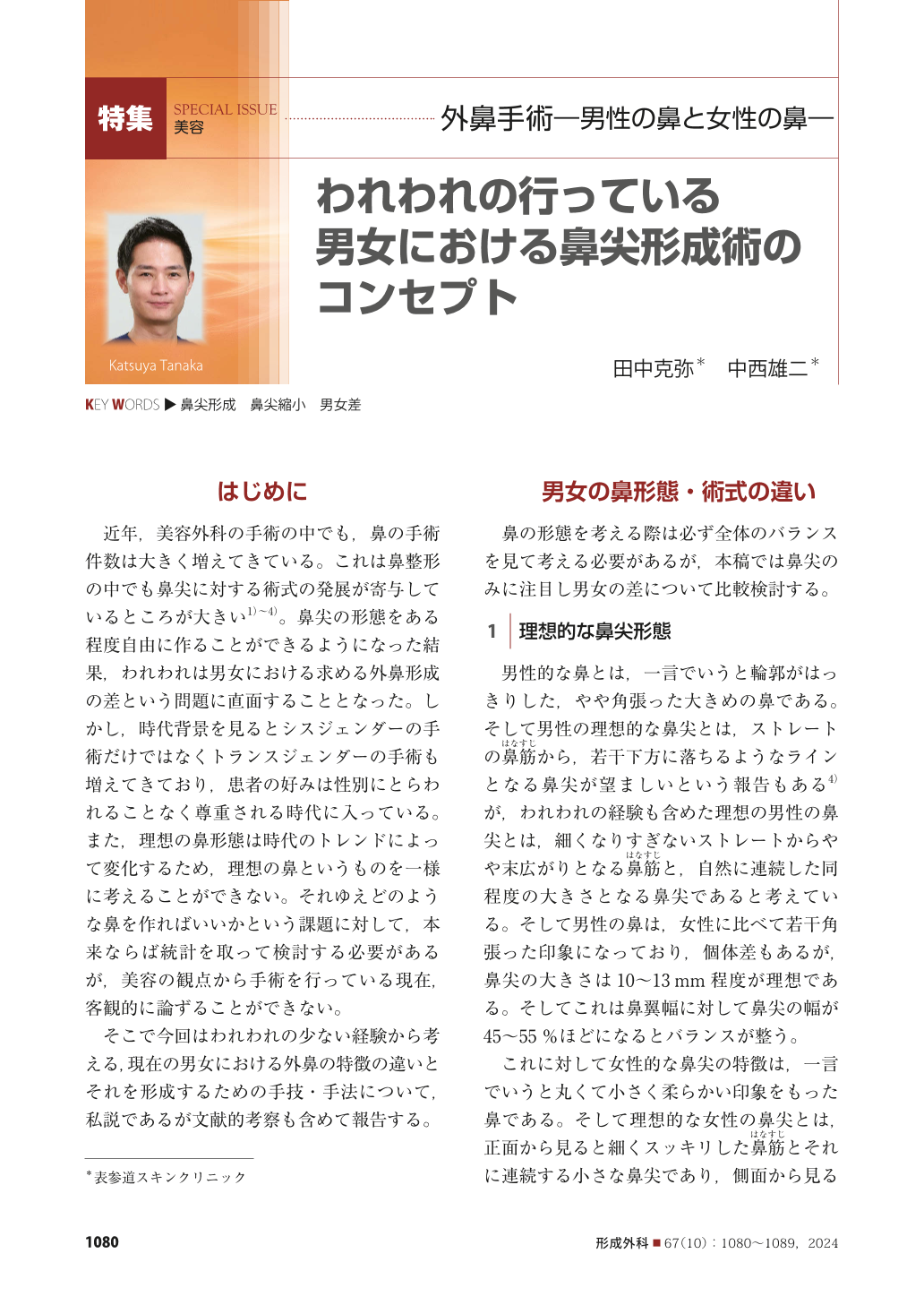Japanese
English
- 有料閲覧
- Abstract 文献概要
- 1ページ目 Look Inside
- 参考文献 Reference
はじめに
近年,美容外科の手術の中でも,鼻の手術件数は大きく増えてきている。これは鼻整形の中でも鼻尖に対する術式の発展が寄与しているところが大きい 1)~4)。鼻尖の形態をある程度自由に作ることができるようになった結果,われわれは男女における求める外鼻形成の差という問題に直面することとなった。しかし,時代背景を見るとシスジェンダーの手術だけではなくトランスジェンダーの手術も増えてきており,患者の好みは性別にとらわれることなく尊重される時代に入っている。また,理想の鼻形態は時代のトレンドによって変化するため,理想の鼻というものを一様に考えることができない。それゆえどのような鼻を作ればいいかという課題に対して,本来ならば統計を取って検討する必要があるが,美容の観点から手術を行っている現在,客観的に論ずることができない。
そこで今回はわれわれの少ない経験から考える,現在の男女における外鼻の特徴の違いとそれを形成するための手技・手法について,私説であるが文献的考察も含めて報告する。
Technological advances in nasal-tip formation in rhinoplasty have been remarkable, and this has resulted in a new problem: differences in nose morphology depending on gender. As the awareness of gender identity continues to expand and the ideal nose shape changes depending on the trends of the times, the choice of nasal-surgery method is becoming more nuanced and complex than ever before. It can thus be difficult to decide what type of nose should be created for a patient based on his/her gender. However, in reality, the nose shape differs depending on patientsʼ gender among the secondary sexual characteristics, and surgery cannot be performed without considering this fact. We retrospectively analyzed the cases of the patients (38 males, 214 females; Median (IQR age 27 (23-32) yrs) who underwent rhinoplasty in the past 2 years at our hospital, focusing on gender differences in the selected surgical technique and the number of onlay grafts. The results of our analyses demonstrated that (i) there were no significant gender differences in the surgical technique, and (ii) the group of males had a higher number of onlay grafts. Although there were no significant differences in surgical techniques depending on gender, we speculate that differences in bone structure led to the differences in how large the nasal tip should be made. With this in mind, it is important to note that the aesthetic goals of each rhinoplasty should be customized to the individual patient, with an emphasis on facial balance and maintaining this balance in a reproducible manner.

Copyright© 2024 KOKUSEIDO CO., LTD. All Rights Reserved.


